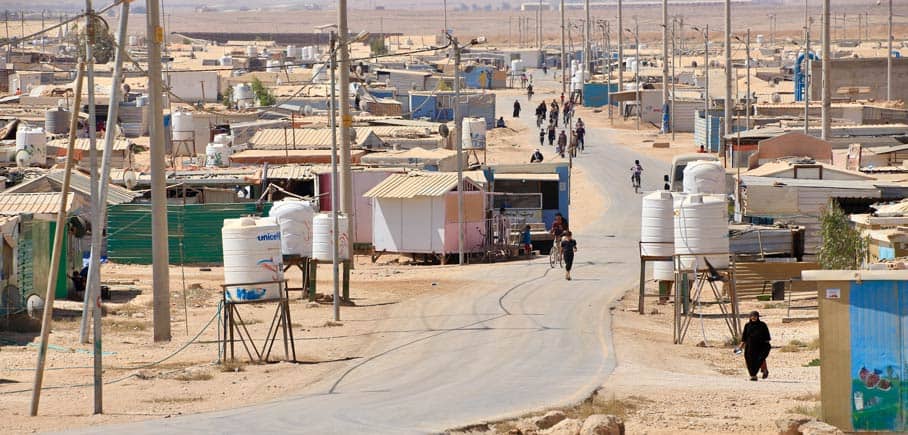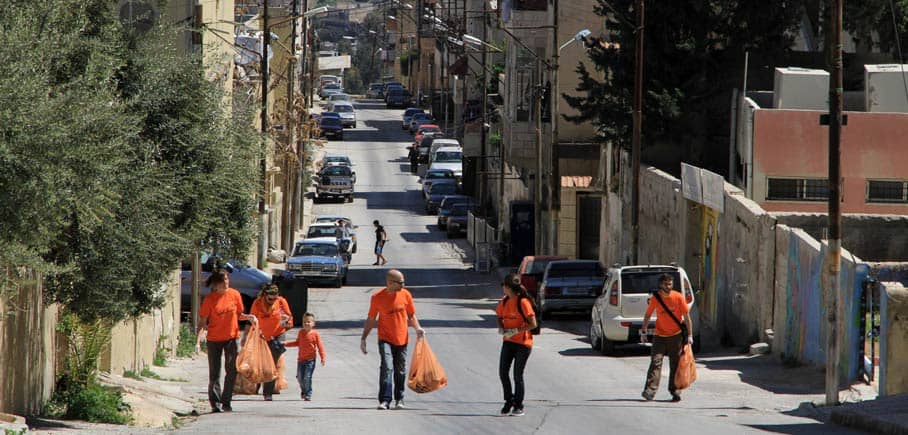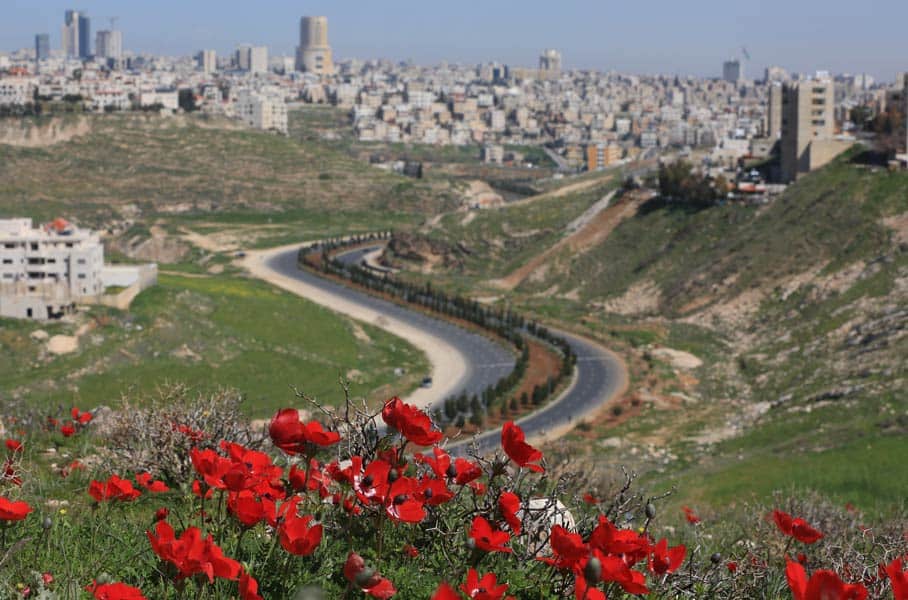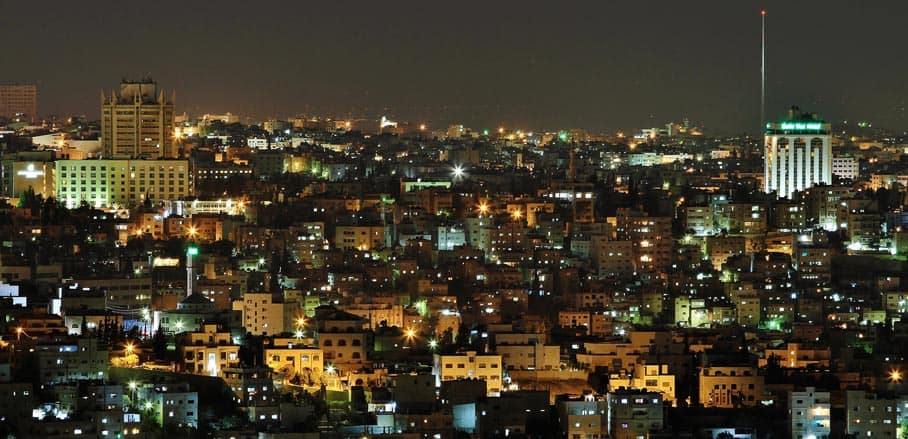Jordan’s Swelling Cities: No More Time for Procrastination!
Challenges to residents, resources, and the environment alike: Mohammad Asfour shares his observations on Jordan’s rapid urbanisation.
The year is 1913. A baby child is born to a Circassian mother in a small city called Amman – in what was then part of the Ottoman Empire. That boy was my grandfather and he had just joined a diverse community that wouldn’t have exceeded 5,000 in number. Amman, which later became the capital of Jordan, was referred to in the bible as the “City of Waters”. And when my grandfather was born, water was still so abundant that a small river gently descended through fertile hills on its journey towards the city centre.
These hills were a great source of grain, and served as pastures for herds of sheep that provided city dwellers with essential protein. It is said that people would go fishing in that small river not far from the Nymphaeum, where a Roman bridge once stood until it was demolished during the mid-20th century. Local materials such as stone – quarried from nearby hills – and cane were used in construction, Amman hosting a thriving circular economy and being, to a great extent, self-sufficient.
By 1920, the whole population of Jordan did not exceed 200,000. Nevertheless, it was rich in culture and peoples, including Circassians and Chechens who had fled Russian persecution in the Caucasus during the late 19th century. By the 1930s the number of inhabitants remained stable.
Now press fast forward, arriving in the year 2021! The population of Jordan has exceeded 10,000,000, the population of Amman 4,000,000, making it the largest city in the levant and the sixth largest city in the Arab world. Population growth that took London over 1,500 years, Amman accomplished in less than 100. Huge and sudden influxes of people during the past 70 years, mainly from Palestine, Syria, and Iraq made planning and managing cities extremely complicated. City planners had to expect the unexpected, stretch resources to the maximum, and hope for the best!

Al Zaatri Syrian Refugee Camp © Mohammad Asfour. This image may not be used, copied or reproduced in any way without written permission from the copyright holder.
What are Common Challenges in Jordan’s Cities?
Cities in Jordan have several challenges to deal with today. On top of them sits the issue of water. With a share of less than 100 cubic metres per capita per year, Jordan is considered one of the most water deprived countries in the world, as a matter of fact it is 900 cubic meters below the international water poverty line. Another challenge is poor public transport – aside from the Bus Rapid Transit (BRT) Project in Amman that was launched around a decade ago and has not been completed yet.
Furthermore, the uncontrolled urban sprawl burdens existing resources, which have to be spread over larger areas. It is harmful to biodiversity and wildlife and it reduces agricultural areas considerably. As a university student I used to explore nature and document what I see – a lot of the serene locations I used to visit have been lost to uncontrolled urbanisation.
Climate change is causing further damage. Flash floods, below average precipitation, and extreme temperatures are a few aspects of this. In October 2018, 21 victims lost their lives in flash floods in the Dead Sea region. The flooding of shops in city centres has become a common scene. The impact is exacerbated because many have built on water runoffs, blocking the flow of water. Furthermore, over grazing and deforestation are preventing water catchment and are thus causing more stress on natural and human-made water discharge systems.
Tapping Potential
But the picture is not all gloomy. Considerable efforts both in the public sector and beyond are taking place. One of such efforts is the Jordan Green Building Council, a green business association that has trained around 7,500 professionals on green design, produced seven booklets, and organised various events to promote the adoption of green building practices since 2009. Another example is the non-governmental organisation WADI that works on planting native species in and around cities in order to improve soil quality, prevent erosion, and contribute to groundwater recharge.

Ahel Al Balad Volunteers Cleaning Up the City © Mohammad Asfour. This image may not be used, copied or reproduced in any way without written permission from the copyright holder.
During the course of my work, I also had the pleasure of working with two municipalities: Amman and Sahab. Amman established itself as a thought leader in sustainability when it launched the Amman Resilience Strategy in 2017, followed by the Amman Climate Action Plan back in 2019. It was also the first Southern and Eastern Mediterranean metropolis to join the European Bank for Reconstruction and Development (EBRD) Green Cities, as it commenced its Green City Action Plan (GCAP) process in December 2018. The municipality of Sahab has emphasised the need for sustainable mobility, with Sahab’s Mayor having been the first Mayor in Jordan to ride a bicycle!
Developing a strategy is one thing, implementing it is a completely different story. Plans need to be turned into actions, and actions require a certain calibre of green leadership with access to resources. Leaders need to demonstrate soft power to convince the masses of the need to change some aspects of their lifestyles. They have to defy the status quo by lobbying for more sustainable regulations and help establish more effective forms of governance.
Design professionals need to embrace integrated design which allows seamless collaboration between architects and engineers: an approach that can be applied towards designing the cities of tomorrow and regenerating the cities of today. In partnership with UN Habitat and with the support of the EBRD and UNDP, we are able to produce a set of guidelines for sustainable reconstruction and urban regeneration under six thematic areas. If applied correctly, these are a great asset for city decision makers.
Finally, adopting the concept of urban green infrastructure has never been more essential than it is today. Green infrastructure refers to “standalone and strategically networked environmental features designed for environmental, social and economic benefits”. It includes several interventions such as permeable surfaces, green walls, green roofs and street trees.

Amman in spring © Mohammad Asfour. This image may not be used, copied or reproduced in any way without written permission from the copyright holder.
Decision makers in cities all over Jordan have a very small window of opportunity to act and if they do, they will help create business opportunities in a country dire for an economic boost. The path is clear, and local technical knowledge is abundant in a country with a percentage of architects and engineers that is amongst the highest in the world. There is no excuse for any further delay!
- Jordan’s Swelling Cities: No More Time for Procrastination! - 12. May 2021
